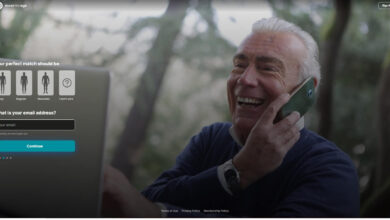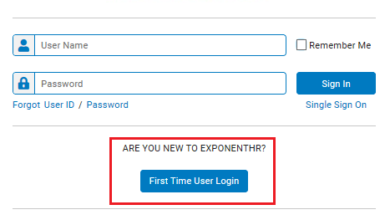The Midnight Hunter: How Cybersecurity’s New Breed Stalks Danger Before It Strikes

Picture this: You’re sound asleep. Downstairs, someone’s picking your front door lock. Your alarm system? Silent. Your motion sensors? Untriggered. They slip inside, rummage through your drawers, copy your sensitive documents… and leave without a trace. You only discover the breach months later when your identity gets stolen.
This isn’t a home invasion. It’s Tuesday on your corporate network.
For years, cybersecurity relied on “burglar alarms” – firewalls shrieking at forced entry, antivirus barking at known threats. But today’s digital intruders? They don’t break down doors. They slip through cracks you didn’t know existed, blend into the background noise, and operate in silence. Waiting. Watching. Planning.
Relying solely on alarms means finding footprints inside your vault. The damage is already done. The game has changed, and a new breed of cyber defender is rising to meet it: The Threat Hunter.
Forget Alarms. Meet the Digital Bloodhounds.
Threat hunting isn’t about waiting for sirens. It’s about grabbing a flashlight and actively combing through your digital landscape, sniffing out hidden dangers before they detonate. Think of hunters as:
- The Curious Investigators: Asking “What feels off here?” instead of waiting for a system to scream.
- The Pattern Spotters: Noticing that tiny blip in data leaving the network at 3 AM, or that single device talking to a server it never contacted before.
- The “Know Your Normal” Experts: Understanding the everyday hum of your systems so well that the slightest discordant note rings alarm bells in their gut.
- The Connectors: Piecing together seemingly unrelated events – a weird login plus unusual software behavior plus a spike in encrypted traffic – to reveal a hidden trail.
Why This Matters Now More Than Ever:
- The Silence is Deafening: Attackers lurk inside networks for an average of 204 days before detection (Mandiant). That’s enough time to throw a six-month party in your systems.
- Alarm Fatigue is Real: Security teams drown in thousands of alerts daily – most are false alarms or trivial noise. Critical threats get lost in the avalanche.
- The Perimeter is Gone: With remote work and cloud sprawl, the old “castle walls” are meaningless. Attackers target people and weak spots, not just network edges.
Hunting in the Wild: No Magic Bullets, Just Smart Sleuthing
Forget Hollywood hackers. Real threat hunting is gritty, persistent detective work:
- Start with a Hunch: “What if someone targeted our new product designs?” or “Could that old, unpatched server be a backdoor?”
- Follow the Digital Dust: Comb through system logs, network traffic records, and device activities – the vast digital breadcrumbs everything leaves behind.
- Ask the Right Questions: “Why is this process running?” “Who really owns this account?” “Where is this data actually going?”
- Trust the Weirdness: Hunters embrace anomalies. That one-off event everyone else ignores? That’s often the golden ticket.
- Contain & Learn: Finding the threat is step one. Understanding how it got in and what it touched is crucial to slam the door shut for good.
Why Humans (Still) Rule This Game:
Yes, AI and automation help sift data. But bots can’t replace:
- Adaptive Thinking: Attackers constantly change tactics. Humans can pivot creatively, anticipating novel moves.
- Context is Everything: Knowing that login from a remote mountain town might be an attacker… or just Dave from Accounting on his ski trip.
- The Big Picture View: Synthesizing clues from emails, network flows, cloud activity, and dark web chatter into a coherent story. Machines see in fragments.
Building Your Hunter Mindset: Where Does Learning Fit In?
This proactive defense requires a unique skillset. This is where deep, practical training shines – like mastering the CompTIA CySA+ Certification (Cybersecurity Analyst+).
Think of CySA+ training as your field guide to becoming a digital tracker. A great cysa+ course doesn’t just lecture; it throws you into the hunt:
- Decoding Threat Intel: Learning to gather clues from the dark web and hacker forums, not just read reports.
- Vulnerability Triage: Figuring out which weaknesses attackers are actually exploiting right now, not just scanning for everything.
- Tool Mastery (Without the Hype): Getting fluent with the hunter’s toolkit – SIEMs (log detectives), EDR (endpoint microscopes), network sniffers – not just knowing they exist.
- Incident Takedowns: Practicing how to calmly corner a threat, cut it off, and kick it out without causing collateral damage.
- Speaking Attacker: Learning the common playbooks and tricks so you know where to look.
Earning your CySA+ certification signals you’ve moved beyond basic security guard duty. It proves you have the analytical chops and hands-on know-how to actively seek out danger. It’s the foundation for building comptia cybersecurity resilience from the inside out.
The Bottom Line: Stop Playing Whack-a-Mole. Start Hunting.
Passive defense is a losing battle. Threat hunting transforms your security team from overwhelmed alarm-answerers into empowered, proactive protectors. It:
- Slams the Door Sooner: Finds intruders in days or weeks, not months.
- Reduces the Chaos: Minimizes the frantic “Oh $#@&!” moments when breaches explode.
- Makes You a Harder Target: Attackers prefer low-hanging fruit. Hunters make your network a prickly fortress.
Ready to Step Into the Shadows?
The best defense isn’t just a stronger wall. It’s having sharp-eyed hunters patrolling the halls, flashlight in hand, knowing exactly what to look for.
Want to learn the craft? Explore how hands-on comptia cysa+ training can sharpen your hunting instincts. Sprintzeal’s CompTIA CySA+ Certification Training is built by practitioners, not theorists. It’s less lecture, more live cyber-sleuthing. See what it takes to become the hunter.




